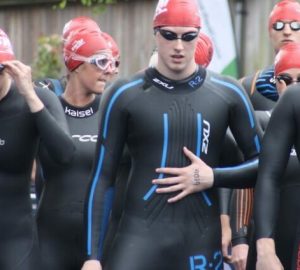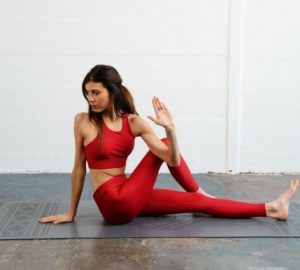Fundamentals of freestyle
When coaching swimmers who are new to the open water the first things I cover are the fundamentals of freestyle: breathing, head position and rotation. No matter how experienced a swimmer you are it is always worthwhile spending some time on the foundations of your stroke before fine-tuning technique or increasing your training. Just like a house, if your foundations are
flawed then your stroke is going
to be unstable!
When you get in the water only focus on one key point at a time so you can really concentrate on how your stroke feels.
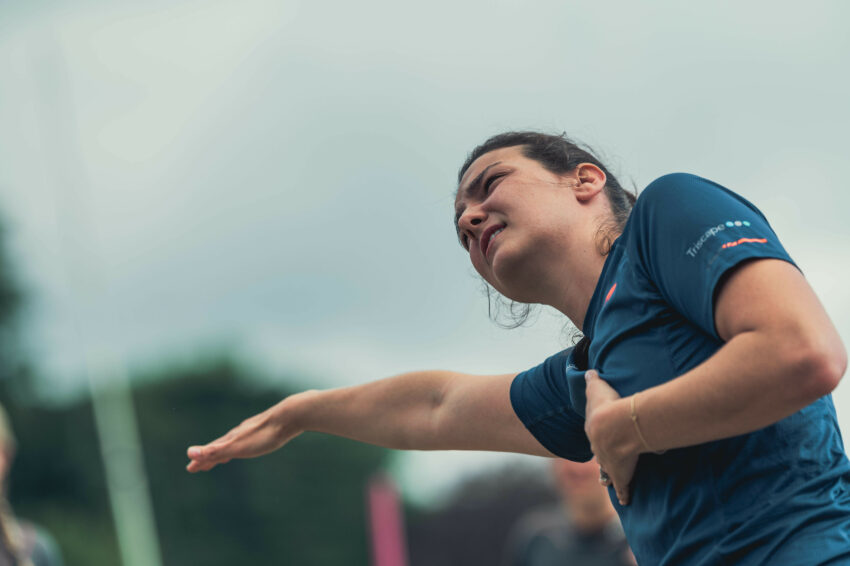
1. Breathing
Breathing is the most underrated skill taught to swimmers around the world.This is the same if a swimmer is a beginner or an elite level athlete. Breathing really sets the rhythm of your stroke and it needs to be calm
and relaxed.
What goes in must come out
So often we hear people taking massive breaths in as they swim. Their mouths are wide open sucking in as much air as they can in the few seconds they have when they turn to breathe. The issue with this is that our breathing always needs to be matched: when you breathe in a certain amount, you have to breathe out the same amount. Have a go right now as you read this – take a big breath in and see what happens. Now try to breathe in the same amount and breathe out just a little, breathe in again, then out a little again… uncomfortable right?
Relaxed breathing
Try this little exercise before you swim so you can see what is happening to you when you breathe like this in the water. Start by lightly jogging on the spot, notice how you are breathing and how much you are breathing in and out. Now take a big lungful of air in as if you were ‘filling your lungs as quickly as possible’ – now breathe it all out. Keep doing this for two or three more breathing cycles. Then stop. Feeling light headed? Yes, that’s because you have just been hyperventilating yourself. Would you run like that? No, well then why do you swim like that?
Think about how much oxygen you are breathing in when you take a breath in swimming and try to breathe in less if you are guilty of taking massive breaths. After all when do you ever fill or empty your lungs when you do any other sport?
The final piece of the puzzle when it comes to breathing and swimming is how to exhale. The easiest way to help regulate your breath is to breathe in calmly through the mouth when your body turns to the side and to breathe out calmly through your nose when your head is in the water. Breathing out the nose helps to keep the out-breath calm and relaxed which will help to ensure the in-breath is just as calm. This is the same for front crawl, breaststroke and butterfly.
There is no golden rule when it comes to bilateral or unilateral breathing (one side or both sides). As long as it feels relaxed and calm then breathe whenever you feel you need to. I would recommend not taking any more than four strokes as a maximum. Where bilateral breathing comes in handy is when you are swimming outdoors. If the waves are coming from the side you always breathe to then it’s good to be able to have a bit of respite and breathe to the other side.
Try this before swimming:
1 Start by practising calm breathing before you get in the water, in the mouth out the nose.
2 Once this feels comfortable and natural then get in the water. Put your face in the water and blow bubbles out your nose as you do this.
3 Do at least 10 breath cycles, breathe out through your nose and look up when you breathe in. Keep the breathing relaxed and calm.
4 Start to turn the head to the side as if you were breathing while swimming.
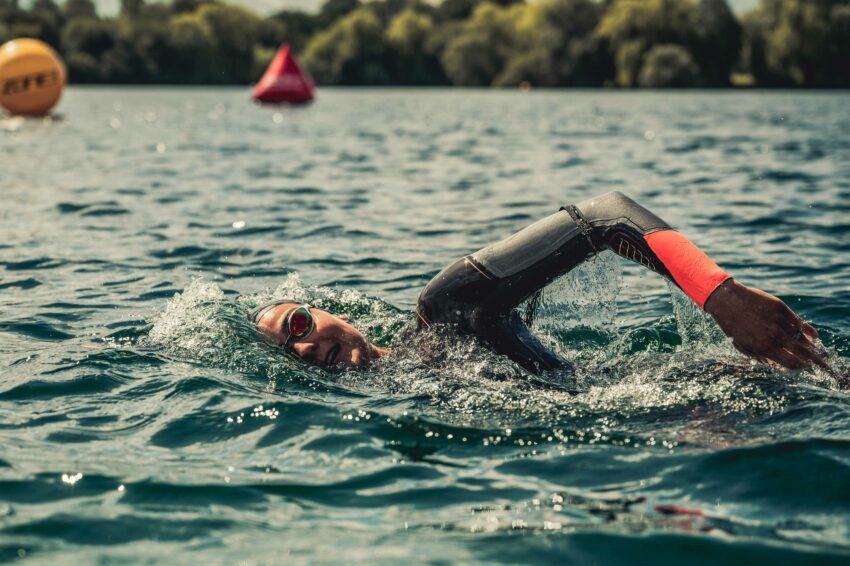
2. Head position
What’s the most efficient position for your body to be in the water? We are aiming for our bodies to be in a straight line as close to the surface of the water as possible. Why? Because we will be causing less drag in the water.
When we think about body position it helps to break it down into two parts – get the head right and the body
will follow.
There are a few things that stop us from being straight in the water and the biggest factor is usually legs sinking behind a swimmer. I’ve heard a lot of swimmers say that they have to kick their legs hard to bring their legs up behind them. But the problem with using your legs a lot is that they are the biggest muscle in the body and require more effort and oxygen to use them. For longer distance swims this isn’t a very efficient way to swim.
Our bodies are like see-saws and if the legs are low then the cause of that is actually our head position.
The important things to remember when working on head position:
1 Eyes to look directly down at the bottom of the pool or lake rather than forward
2 Neck in line with the body, not pushing the head down to the bottom. This will bring your legs up higher behind you reducing your drag and increasing your propulsion in the water.
Try this:
Swim about 8-10 strokes without breathing so you can focus on your eyes looking at the bottom. Try this a few times, after getting your breath back, and see how much easier it feels to swim through the water.
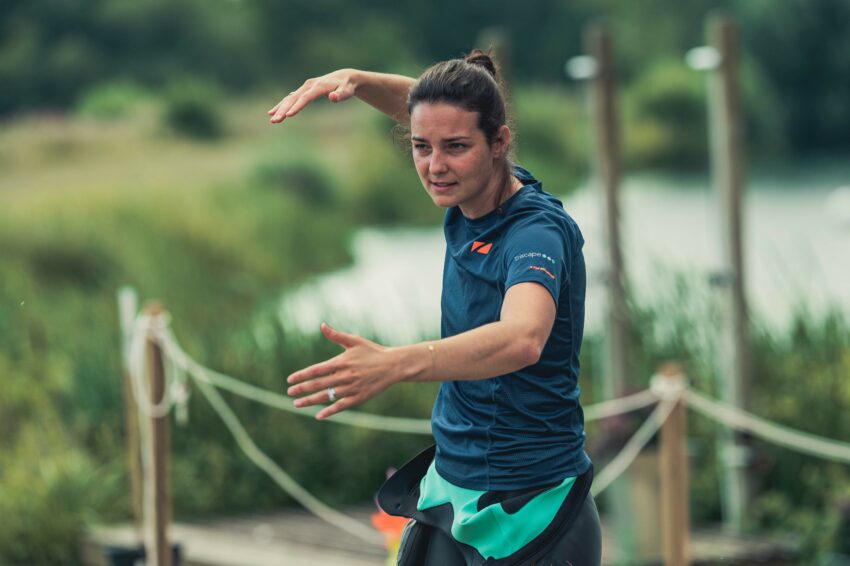
3. Rotation
One of the most common comments I get when someone watches me swim is: “Wow, you’re almost on your side when you take a breath!?” Yes, and this is because I am always aiming to maintain an efficient head position when breathing. If there is not enough rotation when breathing, you’ll have to lift your head to get the oxygen in which makes your legs sink.
Rotation is a full-body movement and needs to be established from the hips not the shoulders or neck.
If you look at the picture of me breathing you can see how much on my side I am when I swim. You’ll also notice how relaxed my upper body is and how my neck is still in line with
my spine.
This position allows me to keep my head flat when I breathe and my arm can clear the water easily. You do not need to be flexible in your shoulders to swim front crawl, you need to be able to move your hips.
Rotation helps us for more than just keeping our head flat when we breathe, it also adds extra length to each and every stroke that we take. This means a swimmer has to take fewer strokes per length, making them a much more efficient swimmer.
Rotation will feel like you have slowed your stroke rate down, which you have, but what you are now doing is maintaining a more streamlined position and reducing your overall drag – making you faster in the water without more effort.
Try this:
Next time you go swimming try swimming about 8-10 strokes without breathing, just working on your hip rotation to see how it feels. Once this feels a bit more natural (it won’t at the start) then add this rotation into your normal stroke with a slightly bigger angle of rotation when you breathe.




